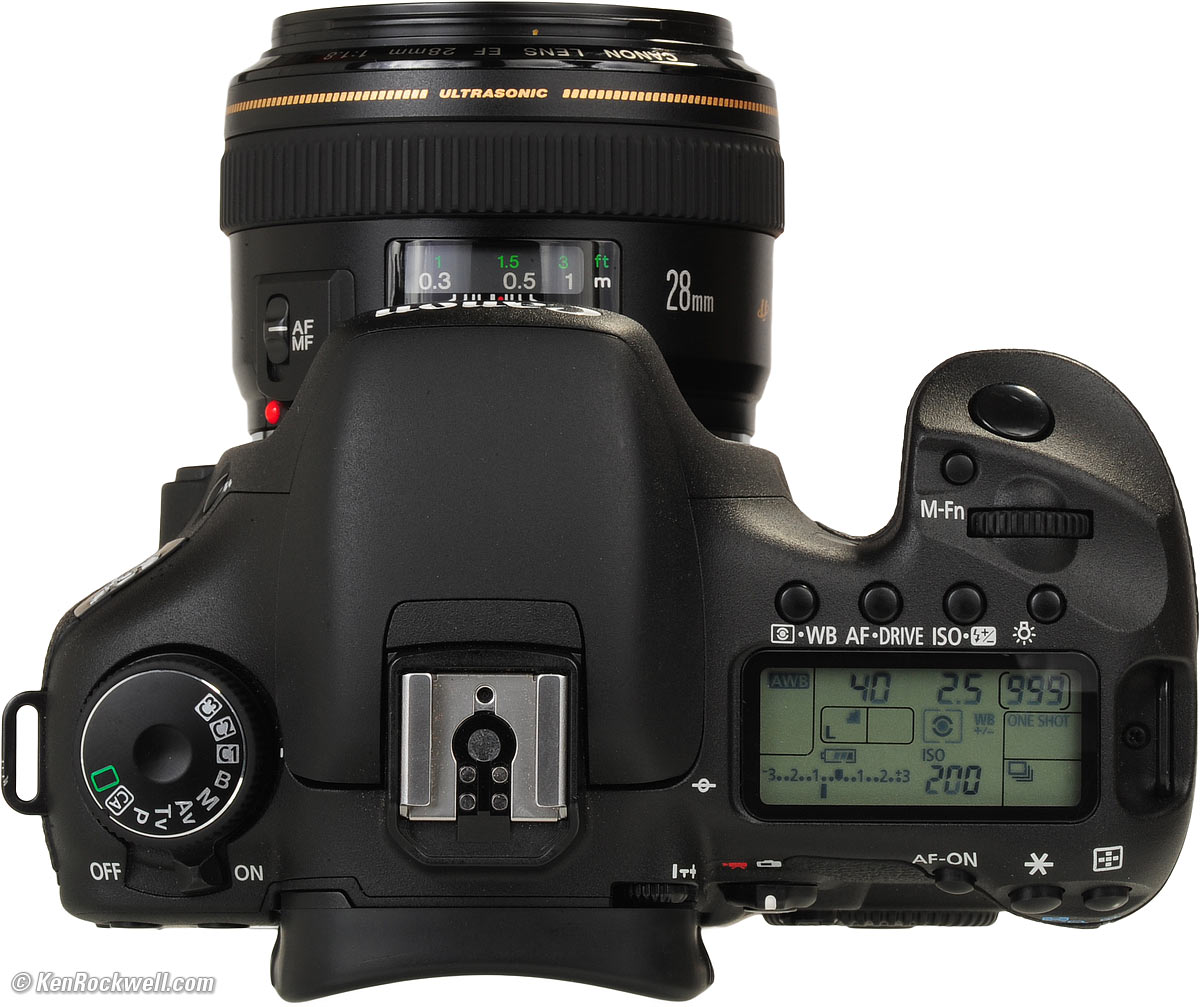
- #CANON 7D REVIEW KEN ROCKWELL MOVIE#
- #CANON 7D REVIEW KEN ROCKWELL FULL#
- #CANON 7D REVIEW KEN ROCKWELL PROFESSIONAL#
#CANON 7D REVIEW KEN ROCKWELL MOVIE#
The Canon 7D's main TFT color LCD monitor is used for status display, accessing menus, image review as well as image preview in Live View and movie modes. Also note that the Canon 7D's battery level has six levels, up from the four on the 50D, and the exposure level indicator covers a range of +/- 3 EV vs +/- 2 EV on the 50D. The information presented on the status LCD is very similar to the 50D, though the position of some of the readouts and icons has changed.
#CANON 7D REVIEW KEN ROCKWELL FULL#
The display is black and white, and only shows the settings that are applicable during use, though the illustration below shows the full range of settings that can appear. The lamp button on the top right is used to illuminate the LCD with an orange backlight for the metering timeout period. This smaller display reduces battery drain compared to the main LCD monitor, and is sometimes more convenient when changing settings while the camera is below eye-level (for example, mounted on a low tripod).
#CANON 7D REVIEW KEN ROCKWELL PROFESSIONAL#
Like most prosumer and professional DSLRs, the Canon 7D features a top-panel LCD display, which reports practically all of the camera's main exposure and menu settings. See the Design tab for more details on control layout and descriptions. The row of buttons found below the 50D's LCD monitor are now arranged vertically to the left of the 7D's LCD, presumably to make room for the larger viewfinder. When set to Movie mode, the Start/Stop button starts and stops recording.īecause Canon moved the power switch to the upper left under the Mode dial, a new Quick Control dial lock switch was necessary, appearing lower left of the dial. When the surrounding switch is set to Live View, the Start/Stop button enters and exits Live View mode. Also new is the Live View/Movie mode switch and start button. Whether you're in RAW or JPEG mode, pressing this button turns on RAW+JPEG for the next frame, then reverts to whichever mode you had active. Where the Live View activation button currently exists on the 50D, a new RAW+JPEG toggle button has been added, an innovation first seen on Pentax digital SLRs. New on the back is the Quick Menu button, which brings up the shooting status display, allowing easy navigation and adjustment of the various controls. This button can be programmed to quickly adjust several camera parameters. And a new Multi-Function (M-Fn) button is just behind and left of the shutter release button. The Status LCD illumination button is upper right of the LCD, instead of the upper left. The power switch is in an entirely new place, jutting out toward the rear from under the Mode dial on the top of the camera instead of below the Quick Control dial on the back. The control layout of the Canon 7D is different compared to the 40D and 50D in a few aspects, but still faithful to the basic EOS concepts.

Listing all the available options for each programmable control is beyond the scope of this review, but the animation at right should give you an idea of the control flexibility offered by the Canon 7D. A Custom Controls menu graphically displays each control that can be customized, along with the customization options available.

Many of the Canon 7D's buttons and dials can also be customized or tweaked to perform as the user prefers. Like the Canon 50D, the EOS 7D has an improved interface compared to older Canon SLRs, with both the traditional monochrome Status LCD and viewfinder LED display, and a rear Status display that can be brought up on the 3-inch LCD.Ī semi-professional camera, the Canon 7D has dedicated controls or buttons for most commonly used functions. The good news is that they're all well placed and serve to enhance the experience.

The Canon 7D's controls - if not their layout - should be familiar to most Canon SLR users, with three major exceptions: The new power switch, the new Multi-Function button, and the Live View/Movie control. Though the Canon EOS 7D is large when compared to past enthusiast and semi-pro models, that gives it plenty of room for the extra controls, while offering ample area for gripping the camera on both the right and left sides.


 0 kommentar(er)
0 kommentar(er)
